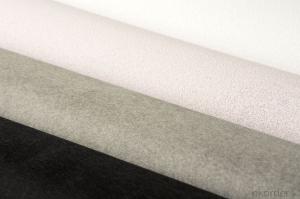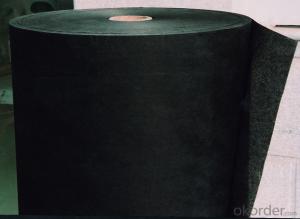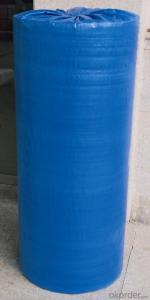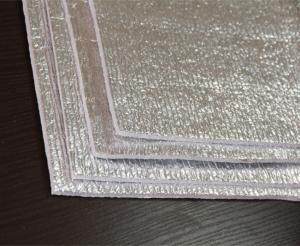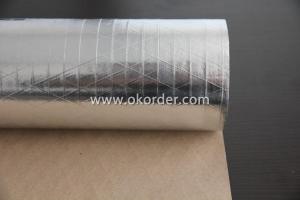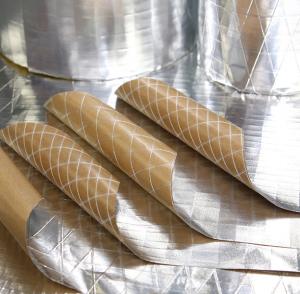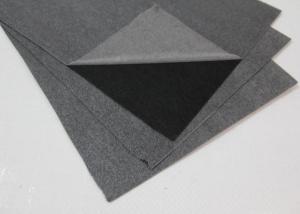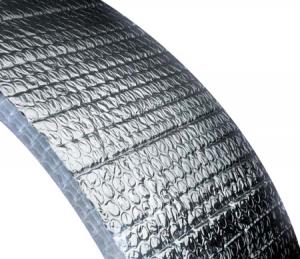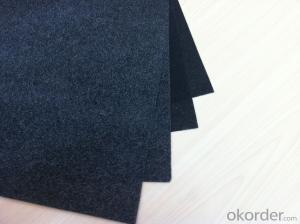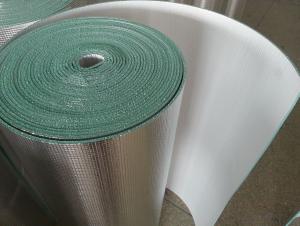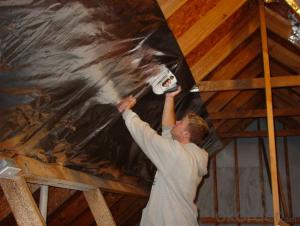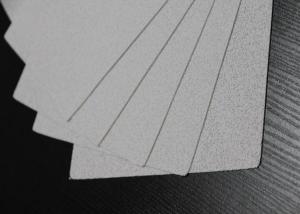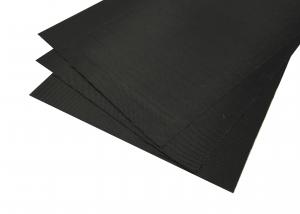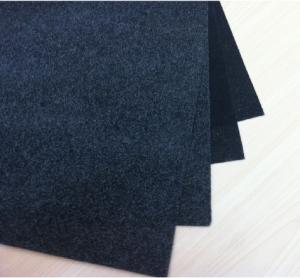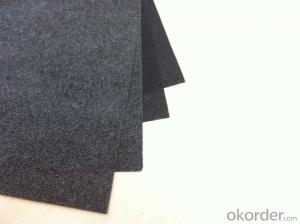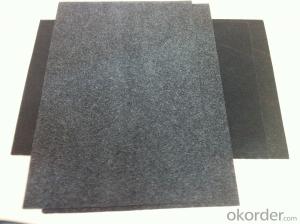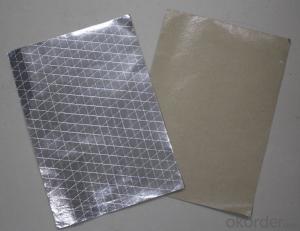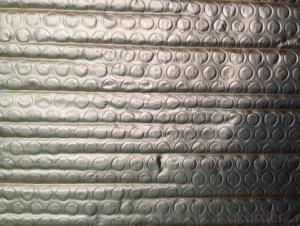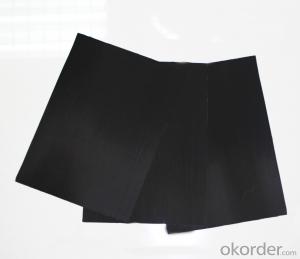REINFORCEMENT TISSUE for ROOFING ACOUSTIC-65C
- Loading Port:
- Shanghai
- Payment Terms:
- TT OR LC
- Min Order Qty:
- 500 m²
- Supply Capability:
- 100000 m²/month
OKorder Service Pledge
OKorder Financial Service
You Might Also Like
Item specifice
Introduction of Fiberglass Tissue
Fiberglass Tissue is a kind of facing, which is made of by the white fiberglass tissue, and special production process.
Application of Fiberglass Tissue
Our black tissue are mainly used as facing for glass wool insulation, rockwool, mineral wool etc. Also fiberglass tissue facing is used under roof decking, under attic rafters, over existing attic thermal insulation, in floors, walls and crawl spaces, and in industrial and commercial buildings to block radiant heat coming into house through the roof during the summer and retain indoor heat generated during in winter
Advantage of Fiberglass Tissue
Light weight
• High manufacturing accuracy
• High strength
• Small inertia resistance
• Strong heat dissipation ability
• Good visual effect
• High reflective insulation
• Heat resistant, water proof, stable at high temperature;
• Environmentally friendly, no smell and not-toxic;
• Smooth and clear surface;
Packing of Fiberglass Tissue
1. Waterproof paper then PVC shrinking Film
2. Water-Proof film only
3. Woven cloth
4. Kraft paper or Water Proof Film then Metal/wooden pallet
5. (Also as your request. )
Pictures of Fiberglass Tissue


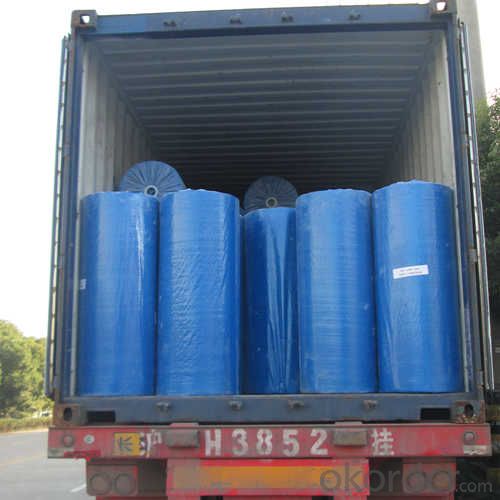
Specification of Fiberglass Tissue
Specification | ||
ITEM | UNIT | VALUE |
Type | C | |
Weight | g/m2 | 65±5 |
Thickness | mm | 0.40 |
Tensile Strength MD | n/125px | ≥130 |
Tensile Strength XD | n/125px | ≥90 |
Fiber Diameter | µ | 9 |
Fire Resistant Property | B1 | |
FAQ
We have organized several common questions for our clients,may help you sincerely:
1. What is the storage condition?
The Aluminum Foil Facing should be stored at room temperature and kept from wet and heat source.
2. How to guarantee the quality of the products?
We have established the international advanced quality management system,every link from raw material to final product we have strict quality test;We resolutely put an end to unqualified products flowing into the market. At the same time, we will provide necessary follow-up service assurance.
3. How long can we receive the product after purchase?
In the purchase of product within four working days, we will arrange the factory delivery as soon as possible. The specific time of receiving is related to the state and position of customers. Commonly 7 to 10 working days can be served.
- Q:Is fiberglass facing fire-resistant?
- Indeed, fiberglass possesses fire-resistant qualities. Its composition comprises a blend of glass fibers and resin, resulting in exceptional resistance to heat. Fiberglass exhibits the ability to endure elevated temperatures without undergoing melting or emitting harmful fumes. It finds frequent application in scenarios where fire resistance holds paramount importance, including insulation, protective garments, and building materials. Nonetheless, it is crucial to acknowledge that the fire-resistance attributes of fiberglass may be influenced by the substances it is coupled with, such as adhesives or coatings.
- Q:How does fiberglass facing contribute to energy efficiency in buildings?
- Enhancing energy efficiency in buildings is a crucial role played by fiberglass facing. Typically used as insulation, this material acts as a barrier against heat transfer, thus reducing the energy required to maintain a comfortable indoor temperature. A primary contribution of fiberglass facing to energy efficiency is its high thermal resistance, also known as R-value. This value measures the resistance to heat flow, and fiberglass insulation with facing possesses a higher R-value compared to materials without facing. Consequently, it effectively prevents heat transfer between the inside and outside of a building, reducing the need for excessive heating or cooling. Moreover, fiberglass facing, when properly installed, aids in creating an airtight seal. This prevents drafts and air leaks from infiltrating, which can have a significant impact on energy efficiency. By sealing these gaps, fiberglass facing helps maintain a consistent indoor temperature and reduces the workload on heating and cooling systems. Another noteworthy aspect is that fiberglass facing acts as a vapor barrier, impeding the movement of moisture through the insulation. This reduces the risk of condensation and subsequent damage to the building structure. By controlling moisture, fiberglass facing contributes to the overall durability and longevity of the insulation system. Additionally, fiberglass facing exhibits fire-resistant properties, which are crucial for building safety. In the event of a fire, it helps slow down the spread of flames, providing occupants with valuable time to evacuate and emergency services with time to respond. In conclusion, fiberglass facing is a cost-effective and efficient solution for improving energy efficiency in buildings. Its high R-value, ability to create an airtight seal, moisture control capabilities, and fire resistance all contribute to reducing energy consumption, lowering utility costs, and creating a more comfortable and sustainable indoor environment.
- Q:How does fiberglass facing improve insulation?
- Fiberglass facing improves insulation by providing an additional layer of protection to the insulation material. The facing acts as a barrier, preventing air and moisture from entering or escaping the insulation. This helps to maintain the desired temperature inside the insulated space, as well as preventing the growth of mold or mildew. Additionally, the facing enhances the durability and strength of the insulation, making it more resistant to damage and ensuring its longevity. It also enhances the fire resistance of the insulation, providing an added layer of safety. Overall, the fiberglass facing improves insulation by enhancing its thermal performance, moisture resistance, durability, and safety.
- Q:What are the benefits of using fiberglass facing?
- Fiberglass facing offers numerous advantages in various applications. Firstly, its exceptional strength and durability make it highly resistant to cracking, warping, and other forms of damage. This quality makes it ideal for construction and structural purposes, where strength and longevity are crucial. Furthermore, fiberglass facing provides excellent thermal insulation properties. With its low thermal conductivity, it effectively prevents heat transfer and maintains a consistent temperature in both hot and cold environments. Consequently, it is widely used in insulation for buildings, HVAC systems, and other energy-efficient applications. Another benefit of fiberglass facing is its resistance to moisture and corrosion. Since it is non-porous and does not absorb water, it is highly resistant to mold, mildew, and rot. This makes it a suitable choice for damp or humid environments, including bathrooms and kitchens. Moreover, fiberglass facing is lightweight and easy to handle, making it convenient to install and transport. It can be easily cut and shaped to fit various surfaces and configurations, allowing for flexibility in design and installation. Its lightweight nature also reduces strain on supporting structures, making it cost-effective for construction projects. Lastly, fiberglass facing comes in a wide range of sizes, thicknesses, and finishes, allowing customization to meet specific project requirements. It can be coated or laminated with different materials to enhance performance, such as adding a vapor barrier or reflective surface. This versatility makes it suitable for various applications across industries, from construction to transportation. In summary, the advantages of fiberglass facing include its strength and durability, thermal insulation properties, resistance to moisture and corrosion, lightweight nature, and customization options. These qualities make it a popular choice in industries where these characteristics are highly valued.
- Q:Does fiberglass facing require regular maintenance?
- No, fiberglass facing does not require regular maintenance. Fiberglass is a durable material that is resistant to many environmental factors, such as moisture, UV rays, and pests. It does not rust, rot, or decay like other materials, which means it does not need to be painted or sealed regularly. However, it is important to keep the fiberglass facing clean and free from dirt or debris to maintain its appearance and performance. Regular cleaning with a mild detergent and water should be sufficient to keep it in good condition. Additionally, if any damage or cracks occur in the fiberglass facing, it should be repaired promptly to prevent further issues. Overall, fiberglass facing is a low-maintenance option that can last for many years with minimal care.
- Q:Can fiberglass facing be recycled?
- Yes, fiberglass facing can be recycled. Fiberglass is a type of reinforced plastic made from fine fibers of glass, and the facing is typically a thin layer of fiberglass. While recycling fiberglass can be more challenging than other materials due to its unique properties, it is still possible to recycle it. The recycling process involves shredding or grinding the fiberglass material into small pieces, which can then be used to make new products. However, it is important to note that the recycling infrastructure for fiberglass may not be as widespread or easily accessible as for other materials, so it is advisable to check with local recycling facilities or specialized fiberglass recycling companies to understand the specific recycling options available in your area.
- Q:Fiberglass Felt Polyester Powder Adhesive Details
- The chopped strand mats cut the glass precursor (sometimes with roving) into a 50 mm long, randomized but evenly laid out on a mesh belt, followed by an emulsion binder or a powdery powder. Bonding to chopped stranded mats. The chopped mat is mainly used for hand lay-up, continuous plate making and mold pressing and SMC processes.
- Q:China's glass fiber product code is what?
- Will be replaced by N or K, respectively, said ND-8, KH-550; ④ EM will be used instead of CM, said the alkali fiberglass
- Q:What is the lifespan of fiberglass facing?
- The lifespan of fiberglass facing can vary depending on a few factors such as the quality of the material, the environment it is exposed to, and how well it is maintained. However, on average, fiberglass facing can last anywhere from 20 to 30 years. With proper care and maintenance, it is possible for fiberglass facing to last even longer. Regular cleaning, avoiding harsh chemicals or abrasive cleaners, and protecting it from excessive sunlight and extreme temperatures can help prolong its lifespan.
- Q:Is not the multi-layer membrane waterproof, the bottom of the membrane should use glass fiber mats?
- No, just fiberglass felt tread cloth soft
1. Manufacturer Overview |
|
|---|---|
| Location | |
| Year Established | |
| Annual Output Value | |
| Main Markets | |
| Company Certifications | |
2. Manufacturer Certificates |
|
|---|---|
| a) Certification Name | |
| Range | |
| Reference | |
| Validity Period | |
3. Manufacturer Capability |
|
|---|---|
| a)Trade Capacity | |
| Nearest Port | |
| Export Percentage | |
| No.of Employees in Trade Department | |
| Language Spoken: | |
| b)Factory Information | |
| Factory Size: | |
| No. of Production Lines | |
| Contract Manufacturing | |
| Product Price Range | |
Send your message to us
REINFORCEMENT TISSUE for ROOFING ACOUSTIC-65C
- Loading Port:
- Shanghai
- Payment Terms:
- TT OR LC
- Min Order Qty:
- 500 m²
- Supply Capability:
- 100000 m²/month
OKorder Service Pledge
OKorder Financial Service
Similar products
New products
Hot products
Related keywords
